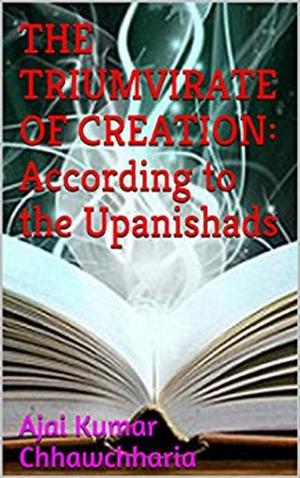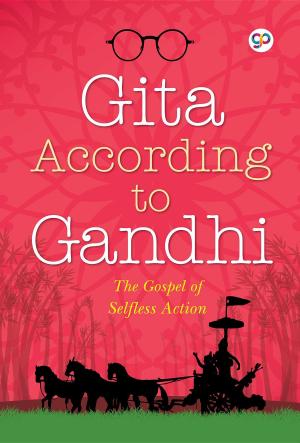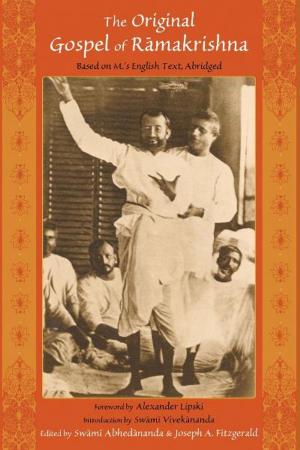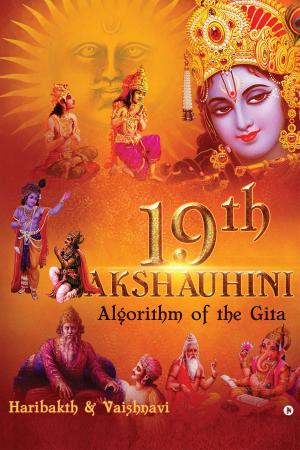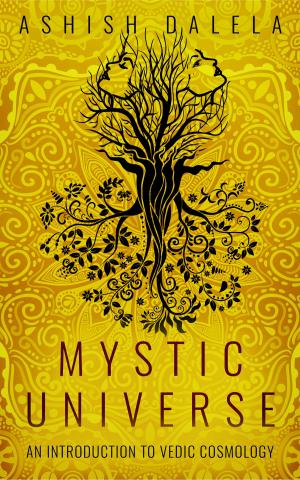Ekadashi: Collection of texts in 6 languages
Nonfiction, Religion & Spirituality, Other Practices, Agnosticism, Eastern Religions, Hinduism| Author: | Abhay Charan das | ISBN: | 9781370113538 |
| Publisher: | Abhay Charan das | Publication: | January 13, 2017 |
| Imprint: | Smashwords Edition | Language: | English |
| Author: | Abhay Charan das |
| ISBN: | 9781370113538 |
| Publisher: | Abhay Charan das |
| Publication: | January 13, 2017 |
| Imprint: | Smashwords Edition |
| Language: | English |
This book is a collection of all Ekadashi Vrat Katha (Ekadashi Mahatmya) texts in 6 languages: English, Hindi, Russian, Ukrainian, Portuguese, Hungarian.
These texts were taken from "Ekadashi Reminder" application for Android © 2012-2016 Abhay Charan das.
More details about Ekadashi:
Ekadashi ("Eleven"), also spelled as Ekadasi, is an auspicious day which occurs twice in a Hindu calendar month. It is the eleventh lunar day (tithi) of each of the two lunar phase which occur in a Hindu calendar month - the Shukla Paksha (period of the brightening moon also known as waxing phase) and the Krishna Paksha (period of the fading moon also known as waning phase).
Fasting
In Hinduism it is considered a spiritually beneficial day and is usually observed by a partial fast. Beans and grains are not eaten during Ekadashi, as on this day these two foods are believed to be contaminated by sin. Only fruits, vegetables and milk products are eaten during Ekadashi. This period of abstention runs from sunrise on the day of Ekadashi to at least sunrise on the day following Ekadashi. Devotees of Lord Vishnu observe Ekadashi fasting to seek His blessings.
Magic technology
Two Ekadashis occur in one month according to positions of the moon. The progression of the moon from full moon to new moon is divided into fifteen equal arcs. Each arc measures one lunar day, called Tithi. The time it takes the moon to traverse that distance is the length of that lunar day. Ekadashi refers to the 11 tithi, or lunar day. The eleventh tithi therefore corresponds to a precise phase of the waxing and waning moon. In the bright half of the lunar month the moon will appear roughly 3/4 full on Ekadashi, and in the dark half of the lunar month the moon will be about 3/4 dark on Ekadashi.
Calculation rules
Calculation of Ekadashi has two rules: Smartha and Vaishnava. The Smarta rule is simple – Ekadashi should be visible at the time of local sunrise. Bhagavata or Vaishnava Ekadashi observance is based on the rule that Dashami or the tenth day during a lunar fortnight should have ended before Arunodaya (96 minutes period before sunrise on the Ekadashi or the 11th day in a lunar fortnight). As can be noted the Vaishnava rule is a little bit spiritual and sophisticated. Eventually Vaishnava fasting day might be one day after of Smartha fasting day.
Tools
In recent years a lot of good, accurate and free software with Panchang and Hindu calendars appeared for personal computers as well as for smartphones and tablets. Their modern powerful processors can momentarily do the calculations ether Lunar and Solar positions for some moment or the time of some event (Purnima, Amavasya, Ekadashi...) with an accuracy of up to 1 second.
As for Smartha Ekadashi - the fasting days are shown in any Hindu calendar or Panchang as the tithi with numbers 11 and 26. More calculations need to be done to get Vaishnava fasting days. But this is also not a problem because there are a lot of free software which performs the job very accurately now.
One of such applications is "Ekadashi Reminder for Android" which calculates Vaishnava fasting days.
This book is a collection of all Ekadashi Vrat Katha (Ekadashi Mahatmya) texts in 6 languages: English, Hindi, Russian, Ukrainian, Portuguese, Hungarian.
These texts were taken from "Ekadashi Reminder" application for Android © 2012-2016 Abhay Charan das.
More details about Ekadashi:
Ekadashi ("Eleven"), also spelled as Ekadasi, is an auspicious day which occurs twice in a Hindu calendar month. It is the eleventh lunar day (tithi) of each of the two lunar phase which occur in a Hindu calendar month - the Shukla Paksha (period of the brightening moon also known as waxing phase) and the Krishna Paksha (period of the fading moon also known as waning phase).
Fasting
In Hinduism it is considered a spiritually beneficial day and is usually observed by a partial fast. Beans and grains are not eaten during Ekadashi, as on this day these two foods are believed to be contaminated by sin. Only fruits, vegetables and milk products are eaten during Ekadashi. This period of abstention runs from sunrise on the day of Ekadashi to at least sunrise on the day following Ekadashi. Devotees of Lord Vishnu observe Ekadashi fasting to seek His blessings.
Magic technology
Two Ekadashis occur in one month according to positions of the moon. The progression of the moon from full moon to new moon is divided into fifteen equal arcs. Each arc measures one lunar day, called Tithi. The time it takes the moon to traverse that distance is the length of that lunar day. Ekadashi refers to the 11 tithi, or lunar day. The eleventh tithi therefore corresponds to a precise phase of the waxing and waning moon. In the bright half of the lunar month the moon will appear roughly 3/4 full on Ekadashi, and in the dark half of the lunar month the moon will be about 3/4 dark on Ekadashi.
Calculation rules
Calculation of Ekadashi has two rules: Smartha and Vaishnava. The Smarta rule is simple – Ekadashi should be visible at the time of local sunrise. Bhagavata or Vaishnava Ekadashi observance is based on the rule that Dashami or the tenth day during a lunar fortnight should have ended before Arunodaya (96 minutes period before sunrise on the Ekadashi or the 11th day in a lunar fortnight). As can be noted the Vaishnava rule is a little bit spiritual and sophisticated. Eventually Vaishnava fasting day might be one day after of Smartha fasting day.
Tools
In recent years a lot of good, accurate and free software with Panchang and Hindu calendars appeared for personal computers as well as for smartphones and tablets. Their modern powerful processors can momentarily do the calculations ether Lunar and Solar positions for some moment or the time of some event (Purnima, Amavasya, Ekadashi...) with an accuracy of up to 1 second.
As for Smartha Ekadashi - the fasting days are shown in any Hindu calendar or Panchang as the tithi with numbers 11 and 26. More calculations need to be done to get Vaishnava fasting days. But this is also not a problem because there are a lot of free software which performs the job very accurately now.
One of such applications is "Ekadashi Reminder for Android" which calculates Vaishnava fasting days.


